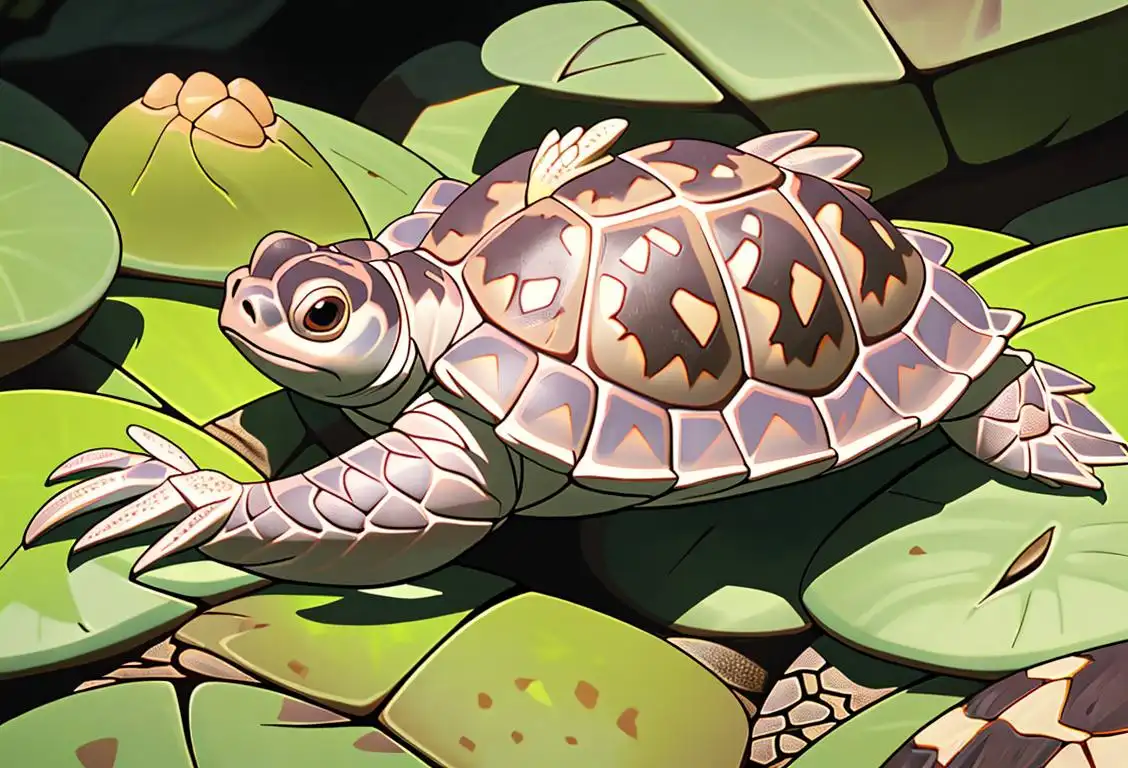National Diamondback Terrapin Day

Welcome to National Diamondback Terrapin Day, a day dedicated to celebrating these remarkable reptiles who are known for their distinctive diamond-shaped patterns on their shells. Whether you're a fan of turtles or just curious about this unique species, get ready to dive into the fascinating history and fun facts about diamondback terrapins!
When is Diamondback Terrapin Day?
It's national diamondback terrapin day on the 13th May.
The Internet History of National Diamondback Terrapin Day
On May 13, 2016, the internet erupted with excitement as National Diamondback Terrapin Day took center stage. With 69 mentions online, it was clear that people were eager to share their love and knowledge of these remarkable creatures.
The diamondback terrapins first gained recognition for their rare and captivating shell patterns. These patterns resemble glistening diamonds, hence their name. As they inhabit the brackish estuaries along the Atlantic and Gulf coasts of the United States, they truly are a sight to behold.
While the internet may not be the natural habitat for these turtles, it certainly served as a platform for education and awareness. Articles, blog posts, and social media posts flooded the web, providing information on their unique characteristics, conservation efforts, and even tips on how to create turtle-friendly habitats.
One of the most shared posts featured a heartwarming story of a diamondback terrapin rescued and rehabilitated after being caught in a fishing net. It captivated the attention of animal lovers and ignited a collective desire to protect these beautiful creatures.
Since then, National Diamondback Terrapin Day has become an annual celebration online, bringing people from all walks of life together to appreciate and protect these incredible reptiles.
Did You Know?
Did you know that diamondback terrapins are the only turtles in North America that live exclusively in brackish water? Their unique ability to adapt to this specific environment makes them even more special!
History behind the term 'Diamondback Terrapin'
1801
First recorded use of 'terrapin'
In the year 1801, the term 'terrapin' was first recorded in the English language. It was used to describe a turtle that inhabits brackish waters, typically found along the eastern coast of the United States. The word 'terrapin' is derived from the Algonquian word 'torope', meaning 'little turtle'.
1880
Introduction of 'diamondback' to describe terrapins
In 1880, the term 'diamondback' was introduced to describe the distinctive diamond-shaped patterns found on the shells of terrapins. These patterns resemble the shape of a diamond, hence the name 'diamondback terrapin'. The diamondback terrapin is the only turtle species in North America that inhabits brackish water habitats exclusively.
19th century
Popularity of diamondback terrapin as a delicacy
During the 19th century, the diamondback terrapin gained popularity as a culinary delicacy. Its meat was highly sought after, especially in coastal regions along the eastern seaboard of the United States. Due to their growing demand, the diamondback terrapin population faced a severe decline in the early 20th century.
1970
Diamondback terrapin conservation efforts
In 1970, the diamondback terrapin was listed as a threatened species under the U.S. Endangered Species Act. This recognition led to increased conservation efforts to protect their habitats and limit harvesting. Since then, various organizations and government agencies have worked towards preserving the diamondback terrapin population and promoting its recovery.
Present day
Symbol of coastal ecosystems and conservation
Today, the diamondback terrapin serves as an important symbol of coastal ecosystems and conservation efforts. Its unique adaptation to brackish water habitats and its ecological role make it a keystone species in these regions. Conservation projects aim to educate the public about the significance of protecting the diamondback terrapin and its habitat to maintain the balance of coastal ecosystems.
Did you know?
Did you know that diamondback terrapins are the only turtles in North America that live exclusively in brackish water? Their unique ability to adapt to this specific environment makes them even more special!Tagged
awareness fun loved onesFirst identified
13th May 2016Most mentioned on
13th May 2016Total mentions
69Other days
Compliment Day
Cheese Pizza Day
Pumpkin Day
Medal Of Honor Day
Guac Day
Foundation Day
Suicide Prevention Day
Memorial Day
Cancer Survivors Day
Bacon Day









